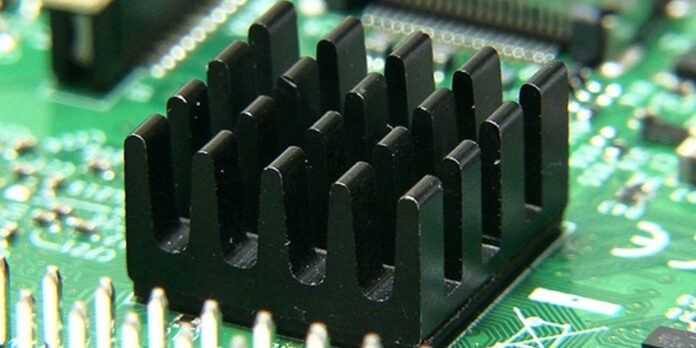A heat sink is a plate of metal that rests on top of a computer chip, like a CPU, and removes heat from its internal parts by allowing it to rise via a grid of fins. Heat sinks are passive, which means they don’t have any moving parts, on their own. The heat sink is typically paired with a fan that expels hot air or a liquid cooling solution that transfers heat midway through the pipes.
Users should select shovel-tooth heat sinks or aluminum heat sinks. If they need a lot of heat dissipation. This is due to the single process used to extrude aluminum heat sinks. Heat attenuation is minimal and the rate of heat conduction is extremely rapid. The radiator must be chosen in accordance with the manual, processed after that, created using tools like machining since it might not exactly fit the user’s electronic device space planning.
High-density heat sinks, metal heat sinks, combined heat sinks, shell heat sinks, heat pipe heat sink sinks as well as water-cooled heat sinks are a few examples of the different types of electronic heat sinks. In this article, we will discuss the electronic heat sink, the working of the heat sink, and some types.
Types Of Heat Sinks
Passive Heat Sink
There is no mechanical part to this kind of heat sink. Passive heat sinks, however, are incredibly dependable. They are typically built of radiators with aluminum fins that dissipate heat through convection. For the heat sink to operate at maximum efficiency, there must be a constant airflow passing over its fins.
Active Heat Sink
This kind of heat sink uses the power supply of the computer. A fan may also be included. In most cases, active heat sinks are referred to as heat sinks and fans (HSF). If you’re seeking these, ball-bearing motors rather than sleeve bearings are advised. You can also use liquid cooling systems, which have grown in popularity recently.
Working Of Heat Sink
Four simple phases make up the removal of heat from a component by a heat sink:
Generation Of Heat
Any system that generates heat and needs it to be removed in order to operate qualifies as this source.
Transferring Of Heat
Natural conduction, which is directly influenced by the heat sink material’s thermal conductivity, is how Heat is transferred from the source and into the heat washbasin. This is made possible by the heat sink’s use of materials with a high thermal conductivity like copper and aluminum.
Distribution Of Heat Through Heat Sinks
Natural conduction is how heat naturally moves from a hot environment lower temperature one throughout the heat sink. Heat sinks will hence frequently be hotter towards their center and colder at their edges.
Heat Moving Away From Heat Sinks
This process is dependent on the temperature gradient of the heat washbasin and working fluid, which is often air or a liquid that isn’t electrically conductive.
Concluding Remarks
Electronic heat sinks boost fluid flow across the heated surface by using forced air, which is often produced via a fan, blower, or even the overall movement of the device. This is comparable to your computer’s fan turning on once it gets heated. More unheated air can pass throughout the heat sink surface thanks to the fan’s air pressure pushing air across it. This allows more heat to escape by increasing the overall temperature gradient across the heat sink.















